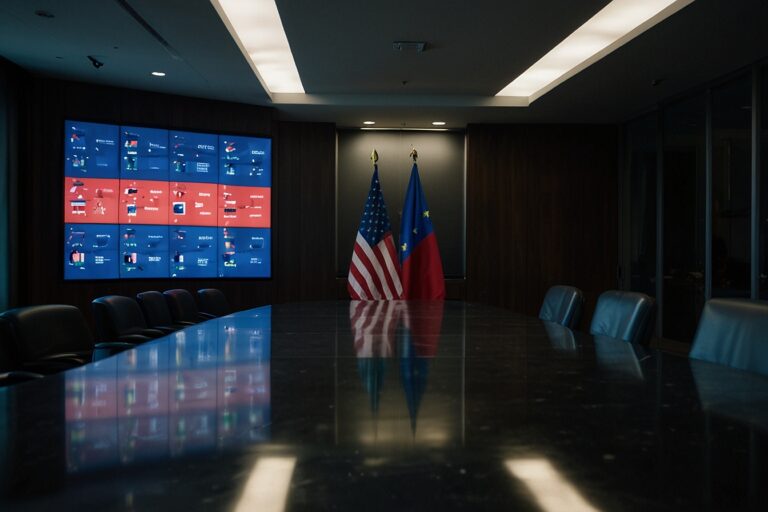
TL;DR
- The US has lifted export restrictions on chip design software to China.
- Move follows June trade talks in London aimed at de-escalating tech tensions.
- Key firms like Synopsys, Cadence, and Siemens confirmed curbs were rescinded.
- China will resume rare earth exports as part of the reciprocal deal.
- Officials warn the trade truce may expire in August, with tariffs still in place.
Export Curbs Reversed After Landmark Agreement
In a major pivot on tech trade policy, the Trump administration has lifted restrictions on exporting chip design software to China, marking a critical implementation step in the London trade accord signed last week. The move reverses export controls imposed in May 2025, when the US initially halted the sale of chip-related tools in retaliation for China’s tightening grip on rare earth exports.
This strategic realignment was confirmed by Synopsys, Cadence, and Siemens—the three leading providers of Electronic Design Automation (EDA) software, which are essential for developing next-generation semiconductors.
Rare Earths Triggered the Chip Software Crackdown
The curbs imposed earlier this year were part of a tit-for-tat retaliation spiral. Following a May 2025 trade truce in Geneva, tensions reignited when Beijing restricted exports of seven rare earth minerals, essential for chipmaking and defense applications. The US responded by blocking EDA software, ethane shipments, and jet engine exports to China.
At the time, EDA tools were seen as a key chokepoint for China’s tech sector. Chinese state-run media noted that Synopsys, Cadence, and Siemens controlled over 70% of the country’s EDA software market.
But under the London agreement reached in June, both countries agreed to unwind the escalating restrictions. In return for the US lifting curbs on chip software, China agreed to resume rare earth exports under its existing licensing regime.
Key Policy Changes in US-China Tech Trade
| Item Lifted or Approved | Party Responsible | Confirmed Date | Source |
| Chip Design Software Export Curbs | US | July 3, 2025 | CNN |
| Ethane Export Restrictions | US | July 2, 2025 | Reuters |
| Jet Engine Shipment Approval | US (Commerce Dept) | July 3, 2025 | Reuters |
| Rare Earth Export License Review | China | Ongoing | China MOFCOM |
| Geneva Trade Truce Timeline | Both | Expires August | White House |
Leading Software Firms Restore Services in China
The immediate impact of the policy reversal was seen across major semiconductor software companies:
- Synopsys said the Commerce Department rescinded its earlier directive and that it is reviewing business and financial implications.
- Cadence confirmed that access to restricted tools has been restored for Chinese clients.
- Siemens has resumed full support to customers in China, reactivating both sales and software access.
While operational details are still unfolding, all three companies are expected to re-engage with China’s tech market, where EDA tools are critical for custom chip development, especially in sectors like AI, telecommunications, and defense.
Ethane and Jet Engines Also Included in Deal
As part of the same trade agreement, the Trump administration also lifted restrictions on ethane exports—a key component in plastic manufacturing. According to US Energy Information Administration data, nearly 50% of US ethane exports in 2024 went to China.
Separately, GE Aerospace and other aviation firms were granted permission to resume jet engine shipments to Chinese partners. Though the White House hasn’t issued a public statement, Commerce officials informed companies directly, as reported by Reuters.
Beijing Responds Cautiously
China’s Ministry of Commerce (MOFCOM) confirmed the mutual rollback of controls and stated that it is actively reviewing export license applications for rare earth shipments. A MOFCOM spokesperson emphasized that the London framework must be honored, warning against future coercive moves by Washington:
“Dialogue and cooperation are the proper way forward, while coercion and extortion lead nowhere,” the official said.
Tariff Questions Remain Unresolved
While the software and materials bans are being lifted, high tariffs between the two nations remain firmly in place. President Trump said U.S. tariffs on Chinese goods currently average around 55%, citing levies related to:
- 10% reciprocal tariff (April 2025)
- 20% fentanyl-related penalty
- Pre-existing duties from 2018–2020 trade war
In contrast, China’s tariffs on U.S. goods will remain at around 10%, though ambiguity persists on whether this includes pre- or post-April duties. Beijing has not formally contested Trump’s interpretation of the tariff balance.
Outlook: Trade Truce Fragile as August Deadline Looms
The 90-day truce brokered in Geneva is set to expire in August 2025, meaning further concessions or escalations could soon re-emerge. While the rollback of EDA software restrictions and rare earth licenses signals a thaw in trade hostilities, experts warn that core structural issues—like military tech transfer and AI research—remain unresolved.
Any failure to extend the current framework could lead to another round of export controls, tariffs, or diplomatic standoffs, undermining this recent progress.






